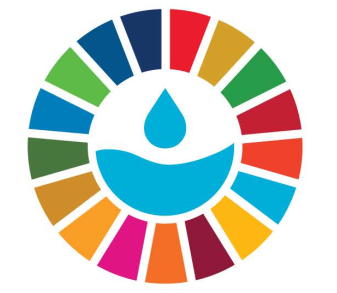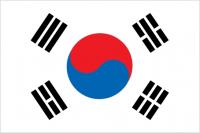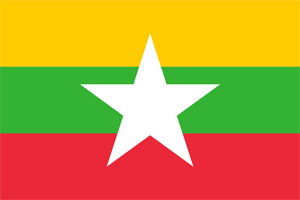Rain School Initiative through the activities of BiTS and Skywater Committee
Rain For All
(
Non-governmental organization (NGO)
)
#SDGAction49565
Description
In rural areas in developing countries where a centralized water supply system is not connected, groundwater is contaminated by saltwater intrusion or heavy metal, or depleted, rainwater harvesting can be a good water supply alternative. The limitation of current rainwater harvesting technology such as poor water quality and water shortage during dry seasons can be solved by technical innovations such as including treatment at Rainwater Harvesting and proper hydrological modeling.
Rainwater harvesting at the individual house level has problems in operation and maintenance due to technical and financial limitations. To avoid these problems, a community-based Rainwater harvesting system is suggested where the community members can monitor the performance and make a democratic decision. Although the community can be schools, health care centers, and religious places, school is considered the first target to utilize the power and energy of the students.
A special science group named BiTS can be involved in the construction and design. And during the maintenance period, they can also do decoration, cleaning, and monitoring.
Community-Based Rainwater For Drinking (CBRD) system at Schools
Rainwater harvesting and treatment systems are constructed at schools to supply water to the students (more than 1 liter/per person /day) for their health. Additional benefits can be expected by involving students in their school curriculum and activity by organizing a special group in the school, the name of which is called BiTS which stands for Bi (Rain in the Korean language) Teacher and Student. Sustainable management can be insured by a Skywater Committee which consists of the teachers, students, parent and local authorities.
Students can drink safe water.
After the successful demonstration of several CBRD systems in one country and other countries, it can be suggested to the local and central governments to implement the regulatory framework,
The sharing of experience and experiences from BiTS from each country can be made through online and offline conferences and get together. Also, the experience of the Skywater committee will be exchanged.
- The CBRD system at 2 Rain schools in 2023, 5 Rain schools in 2024, and 5 Rain schools in 2025.
- The online conference with BiTS and Skywater Committee will be made 1 time/a year and offline meetings will be made once a year.
Rain For All is responsible for the overall process of the CBRD at schools. The design and monitoring will be made by the academic sector at SNU. The funding will be found from MKCF and AKCF. The result of the project will be shared by the publication of scientific papers and blog articles to the water experts.
The evaluation of performance of the CBRD system and project will be evaluated by both quantitative and qualitative questions and analysis by the indexes used in technical aspects.
Mekong Institute, ASEAN-Korea Center, Seoul National University
And should meet the national drinking water quality standard.
There are good examples of such activities in schools in Vietnam, Thailand, and Cambodia.
BiTS students from each country can make a good network with each other by exchanging and sharing information about water and rainwater at an international online conference.
SDGS & Targets
Goal 6
Ensure availability and sustainable management of water and sanitation for all
6.1
By 2030, achieve universal and equitable access to safe and affordable drinking water for all
6.1.1
Proportion of population using safely managed drinking water services
6.2
By 2030, achieve access to adequate and equitable sanitation and hygiene for all and end open defecation, paying special attention to the needs of women and girls and those in vulnerable situations
6.2.1
Proportion of population using (a) safely managed sanitation services and (b) a hand-washing facility with soap and water
6.3
By 2030, improve water quality by reducing pollution, eliminating dumping and minimizing release of hazardous chemicals and materials, halving the proportion of untreated wastewater and substantially increasing recycling and safe reuse globally
6.3.1
Proportion of domestic and industrial wastewater flows safely treated
6.3.2
Proportion of bodies of water with good ambient water quality
6.4
6.4.1
Change in water-use efficiency over time
6.4.2
Level of water stress: freshwater withdrawal as a proportion of available freshwater resources
6.5
By 2030, implement integrated water resources management at all levels, including through transboundary cooperation as appropriate
6.5.1
Degree of integrated water resources management
6.5.2
Proportion of transboundary basin area with an operational arrangement for water cooperation
6.6
6.6.1
Change in the extent of water-related ecosystems over time
6.a
6.a.1
Amount of water- and sanitation-related official development assistance that is part of a government-coordinated spending plan
6.b
Support and strengthen the participation of local communities in improving water and sanitation management
6.b.1
Proportion of local administrative units with established and operational policies and procedures for participation of local communities in water and sanitation management
Goal 4
Ensure inclusive and equitable quality education and promote lifelong learning opportunities for all
4.1
By 2030, ensure that all girls and boys complete free, equitable and quality primary and secondary education leading to relevant and effective learning outcomes
4.1.1
Proportion of children and young people (a) in grades 2/3; (b) at the end of primary; and (c) at the end of lower secondary achieving at least a minimum proficiency level in (i) reading and (ii) mathematics, by sex
4.1.2
Completion rate (primary education, lower secondary education, upper secondary education)
4.2
By 2030, ensure that all girls and boys have access to quality early childhood development, care and pre-primary education so that they are ready for primary education
4.2.1
Proportion of children aged 24–59 months who are developmentally on track in health, learning and psychosocial well-being, by sex
4.2.2
Participation rate in organized learning (one year before the official primary entry age), by sex
4.3
By 2030, ensure equal access for all women and men to affordable and quality technical, vocational and tertiary education, including university
4.3.1
Participation rate of youth and adults in formal and non-formal education and training in the previous 12 months, by sex
4.4
By 2030, substantially increase the number of youth and adults who have relevant skills, including technical and vocational skills, for employment, decent jobs and entrepreneurship
4.4.1
Proportion of youth and adults with information and communications technology (ICT) skills, by type of skill
4.5
4.5.1
Parity indices (female/male, rural/urban, bottom/top wealth quintile and others such as disability status, indigenous peoples and conflict-affected, as data become available) for all education indicators on this list that can be disaggregated
4.6
By 2030, ensure that all youth and a substantial proportion of adults, both men and women, achieve literacy and numeracy
4.6.1
Proportion of population in a given age group achieving at least a fixed level of proficiency in functional (a) literacy and (b) numeracy skills, by sex
4.7
By 2030, ensure that all learners acquire the knowledge and skills needed to promote sustainable development, including, among others, through education for sustainable development and sustainable lifestyles, human rights, gender equality, promotion of a culture of peace and non-violence, global citizenship and appreciation of cultural diversity and of culture’s contribution to sustainable development
4.7.1
Extent to which (i) global citizenship education and (ii) education for sustainable development are mainstreamed in (a) national education policies; (b) curricula; (c) teacher education and (d) student assessment
4.a
Build and upgrade education facilities that are child, disability and gender sensitive and provide safe, non-violent, inclusive and effective learning environments for all
4.a.1
Proportion of schools offering basic services, by type of service
4.b
4.b.1
Volume of official development assistance flows for scholarships by sector and type of study
4.c
By 2030, substantially increase the supply of qualified teachers, including through international cooperation for teacher training in developing countries, especially least developed countries and small island developing States
4.c.1
Proportion of teachers with the minimum required qualifications, by education level
Goal 13
Take urgent action to combat climate change and its impacts
13.1
Strengthen resilience and adaptive capacity to climate-related hazards and natural disasters in all countries
13.1.1
Number of deaths, missing persons and directly affected persons attributed to disasters per 100,000 population
13.1.2
Number of countries that adopt and implement national disaster risk reduction strategies in line with the Sendai Framework for Disaster Risk Reduction 2015–2030
13.1.3
Proportion of local governments that adopt and implement local disaster risk reduction strategies in line with national disaster risk reduction strategies
13.2
Integrate climate change measures into national policies, strategies and planning
13.2.1
Number of countries with nationally determined contributions, long-term strategies, national adaptation plans and adaptation communications, as reported to the secretariat of the United Nations Framework Convention on Climate Change
13.2.2
Total greenhouse gas emissions per year
13.3
Improve education, awareness-raising and human and institutional capacity on climate change mitigation, adaptation, impact reduction and early warning
13.3.1
Extent to which (i) global citizenship education and (ii) education for sustainable development are mainstreamed in (a) national education policies; (b) curricula; (c) teacher education; and (d) student assessment
13.a
Implement the commitment undertaken by developed-country parties to the United Nations Framework Convention on Climate Change to a goal of mobilizing jointly $100 billion annually by 2020 from all sources to address the needs of developing countries in the context of meaningful mitigation actions and transparency on implementation and fully operationalize the Green Climate Fund through its capitalization as soon as possible
13.a.1
Amounts provided and mobilized in United States dollars per year in relation to the continued existing collective mobilization goal of the $100 billion commitment through to 2025
13.b
Promote mechanisms for raising capacity for effective climate change-related planning and management in least developed countries and small island developing States, including focusing on women, youth and local and marginalized communities
13.b.1
Number of least developed countries and small island developing States with nationally determined contributions, long-term strategies, national adaptation plans and adaptation communications, as reported to the secretariat of the United Nations Framework Convention on Climate Change
SDG 14 targets covered
| Name | Description |
|---|
Deliverables & Timeline
Establish three Community-Based Rainwater for Drinking systems at schools in Mekong Region (Vietnam, Cambodia, Thailand). Organize the BiTS group and the Skywater committee at each school. Make active engagement in school.
Establish two Community-Based Rainwater for Drinking systems at schools in Mekong Region (Laos and Myanmar (or Vietnam)). Organize the BiTS group and the Skywater committee at each school. Make active engagement in school. Organize a UN Virtual side event on the same topic. Organize an international rain school forum with the five schools including other rain schools in other countries.
Establish 5 Community-Based Rainwater for Drinking systems at schools in the Mekong region and/or ASEAN Region. Organize the BiTS group and the Skywater committee at each school. Make active engagement in school. Organize an international rain school forum with the five schools and other similar rain schools in other countries.
Establish 5 Community-Based Rainwater for Drinking systems at schools in the Mekong region and/or ASEAN Region. Organize the BiTS group and the Skywater committee at each school. Make active engagement in school. Organize an international rain school forum with the five schools and other similar rain schools in other countries. Organize an international Skywater comittee forum with the five schools and other similar rain schools in other countries.
Resources mobilized
Partnership Progress
Feedback
Action Network

Timeline
Entity
Region
- Asia and Pacific
Geographical coverage
Other beneficiaries
Schools in rural areas in developing countries and schools in developed countries as well. Although developed countries may have less chance of water shortage, it will be better for the students to be prepared for such cases. Regardless of the development, all BiTS can exchange some common knowledge and wisdom such as site-specific water culture in different regions.
More information
Countries







Headquarters
Contact Information
Mooyoung Han, President of "Rain For All"

